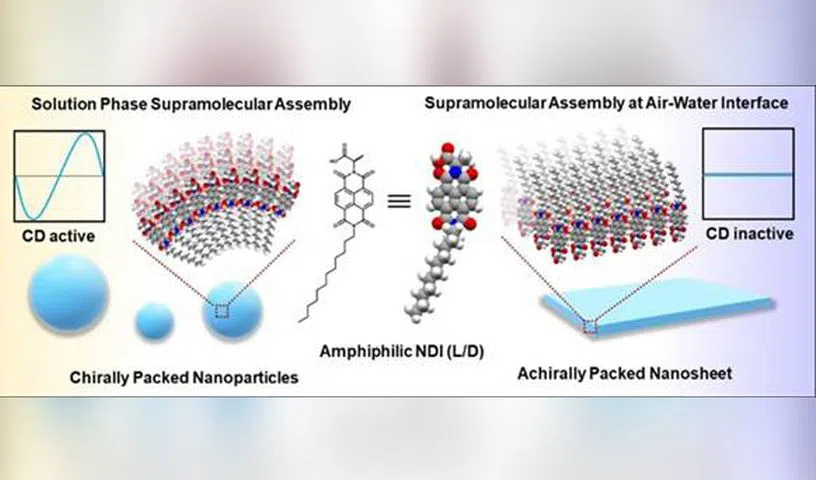Indian study discovers method to create nanostructures for biomedicine, electronics

The team achieved a breakthrough in understanding how to control the assembly of tiny molecular units into complex structures. They believe this advancement could lead to the creation of new materials that have the potential to revolutionize industries such as electronics and healthcare.
New Delhi: A team of Indian researchers from the Centre for Nano and Soft Matter Sciences (CeNS) and Jawaharlal Nehru Centre for Advanced Scientific Research (JNCASR), Bengaluru — autonomous institutes under Department of Science and Technology (DST) — have unravelled new method to create nanostructures for use in biomedicine and electronics.
The team made a breakthrough in understanding the process of controlling the assembly of tiny molecular units into complex structures.
This, they said, holds promise for creating new materials that could revolutionise industries like electronics, healthcare.
“Supramolecular self-assembly is a process where small molecules spontaneously organise into larger, well-defined structures without external direction,” said the Ministry of Science and Technology, in a statement.
“Understanding this process is crucial for creating new organic materials that can be used to develop nanodevices — tiny machines useful for performing specific tasks at the molecular level,” it added.
The researchers explored the self-assembly behaviour of specific molecules called chiral amphiphilic naphthalene diimide derivatives (NDI-L and NDI-D).
They experimented with two different methods of assembling these molecules — solution-phase assembly and air-water interface assembly.
The solution phase involved assembling molecules in a liquid solution. This leads to the formation of spherical nanoparticles, which display unique optical properties, such as strong mirror-imaged circular dichroism (CD) signals. These properties are important for materials that interact with light in precise ways.
On the other hand, the air-water interface assembly involved the assembling of molecules at the boundary between air and water. Here, instead of forming spherical nanoparticles, the molecules arranged themselves into flat, two-dimensional layers with irregular edges.
The layers did not exhibit the same optical properties as the solution-assembled nanoparticles.
This indicates that the environment in which molecules assemble plays a critical role in determining their final structure and properties, said the team, in the paper recently published in the journal ACS Applied Nano Materials.
The study opens up exciting possibilities for creating new materials with tailored properties.
Such materials could be used to develop more effective drug delivery systems in the field of biomedicine. These systems can help target specific areas of the body. Whereas, in electronics, the materials could lead to the development of faster, more efficient devices, the researchers said.






